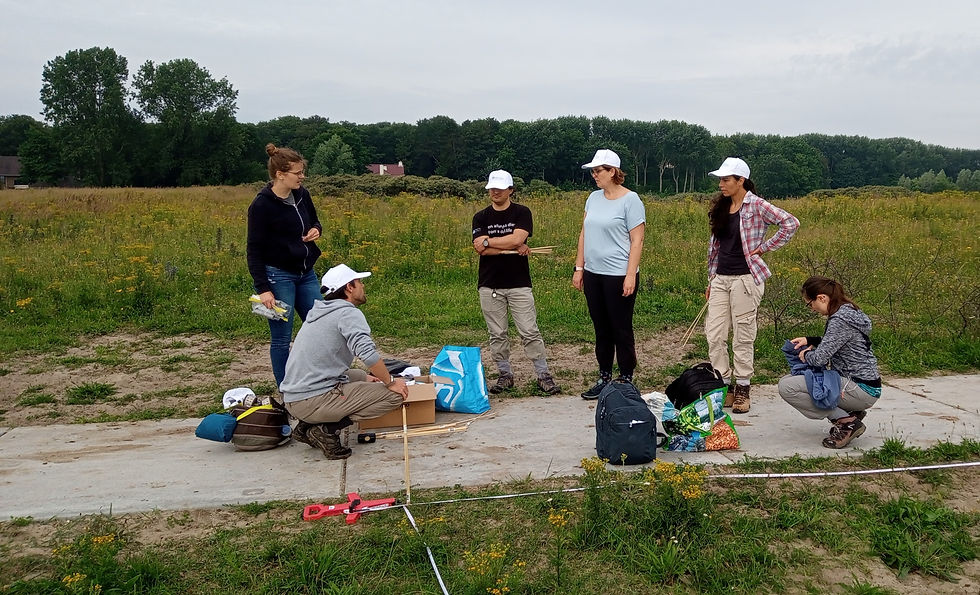Happy world soil day!
- Hazal Kandemir

- Dec 5, 2023
- 2 min read
Soils and soil fungi are in serious need of more of our attention, Hazal Kandemir explains

Soil is an important part of our history. In this thousands-year-old relationship between “humans” and “humus”, we receive food, shelter, inspiration and more from soil.
Soil has been in our games, beliefs, history, and arts. Since we were little kids, we felt its strong but also flexible structure. We shaped it, transformed it, and changed it. Unfortunately, some of these changes put the future of life on earth in danger. To raise awareness for the importance of protecting soil and soil biodiversity, as well as to empower and engage citizens around the world to improve soil health, the United Nations declared December 5 as “World Soil Day”. In the Netherlands, research teams in ARISE create awareness and provide tools and services for exploring and protecting Dutch soil biodiversity.
Why is soil biodiversity important?
It is estimated that more than 50% of the earth’s total biodiversity can be found in soil (Anthony et al. 2023) and this diversity plays crucial roles in pollution remediation, water purification, plant growth, and nutrient cycling (Lehmann et al. 2020). Soil can store large amounts of organic carbon; therefore, it helps to keep the global carbon cycle in balance and regulate the climate. The continuation of these benefits depends on the balance in the soil. Therefore, more and more studies are focusing on soil biodiversity to explore, understand, and protect its major components, such as fungi. Fungi are the second most abundant organisms in soil; therefore, they are essential for soil functions.

What about Dutch soil fungal diversity?
According to the data from 2020, 68.5% of the lands in the Netherlands were farmlands, forests, and natural areas. This data already shows how important it is for the country to keep its soil healthy by improving its quality and protecting its biodiversity. Nevertheless, in 2020, fungi were ranked fifth among 18 species groups on the list of threatened and extinct species in the Netherlands. Also, even though there are ongoing efforts from both mycologists and citizen scientists to discover Dutch soil fungal diversity, the real numbers for the Dutch soil fungi are still unknown, and particularly little is known about the diversity of microscopic fungi that do not grow as mushrooms in Dutch soil.
New species coming
The good news is that, as a part of the ARISE project, researchers from the Westerdijk Fungal Biodiversity Institute in Utrecht have been identifying and describing these microscopic fungi to be included in the ARISE database, and they aim to publish data for more than 100 fungal species in 2024 that were isolated from several locations in the Netherlands and will be described for the first time.
Under the leadership of Naturalis Biodiversity Center and Westerdijk Fungal Biodiversity Institute and with the support of people who are “passionate about fungi,” all known Dutch fungi will be listed in the ARISE target list with the availability of DNA reference barcodes. Thanks to this database, it will be possible to have a better estimation of the numbers and species of Dutch fungi.
Hazal Kandemir
Westerdijk Fungal Biodiversity Institute
Do you want to know more? Check our earlier blogs about soil sampling and fungal diversity research in ARISE.




Comments